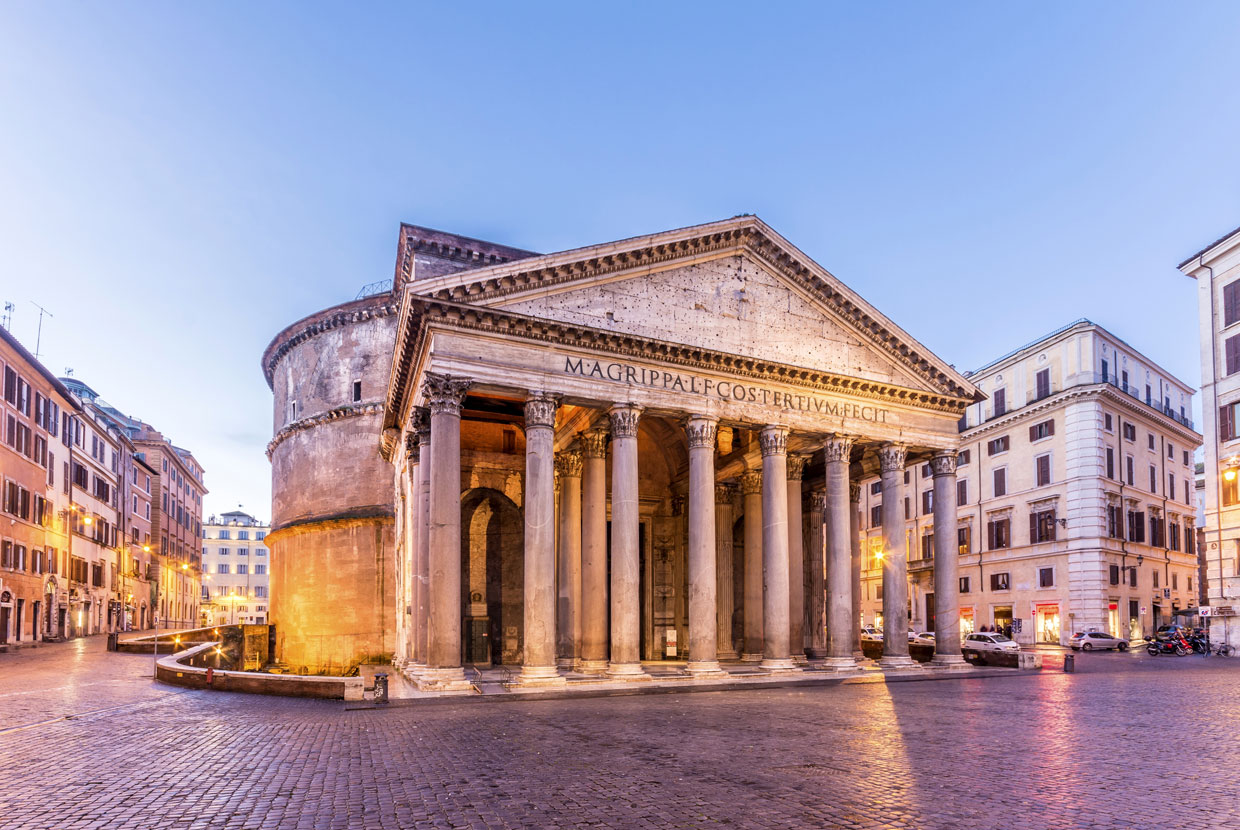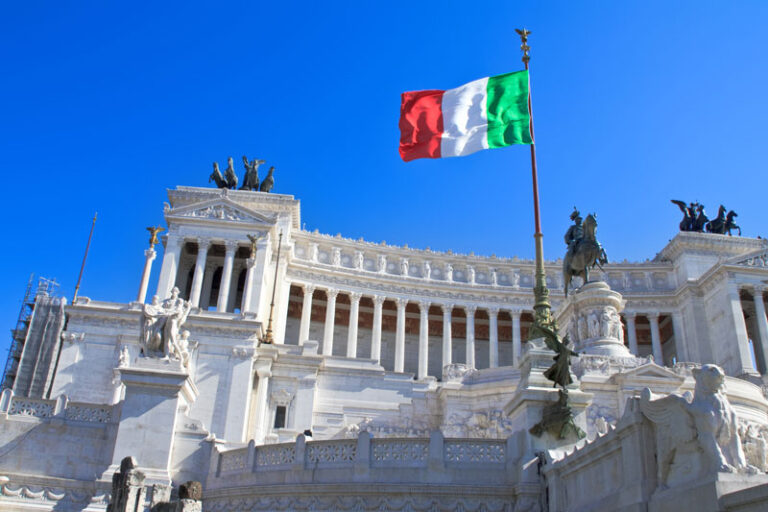
While the Pantheon may not be on the same scale as St Peter’s Basilica or the Colosseum, this stunning masterpiece is one of the most intriguing sights in Rome. It’s true, with a truly remarkable facade, the Pantheon features some of the most intricate architecture but the story behind this mysterious structure is just as interesting as the iconic exterior.
The Pantheon is a famous landmark in Rome that was initially known as a Roman Temple. It was built by Marcus Agrippa and completed by Emperor Hadrian in 126 AD, more than 2,000 years ago. Aside from the interesting backstory (more and that in a moment), the Pantheon is a spectacular sight and an elegant example of landmarks from the great Roman Empire. In fact, when Michelangelo first glimpsed the Pantheon, he said that the structure looked like the work of angels rather than Romans!
Now, let’s take a look at the fascinating history of the Pantheon:
The Fascinating History of the Pantheon
Pantheon translates as “honor all Gods” and this Greek adjective explains how the temple was built in respect of the various Greek gods but certain aspects about this origin are still in question.
In other words, the precise age of this structure is still unknown, Roman legend states that the Pantheon was initially built in honor of their mythological founder, Romulus. However, many experts believe that the first Pantheon was built in 27 BC by Agrippa, the right hand of Emperor Augustus.
In 80AD, the Pantheon was then engulfed in “the Great Fire” and needed to be rebuilt by Emperor Domitian in the subsequent years. Incredibly, the structure burnt to the ground once again in 110 AD when it was hit by lightening and it was Emperor Hadrian who constructed the temple we see today.
Emperor Hadrian was incredibly passionate when it came to architecture and along with Apollodorus of Damascus, he designed the entirety of the Pantheon. Unfortunately, Emperor Hadrian eventually executed this architect over disagreements in terms of the overall design.
The Great Wonder and Mystery of the Pantheon
For many experts, it’s still a mystery how this majestic temple managed to withstand the many barbarian raids, for every other Roman monument was pillaged and destroyed during these times. At the same time, the Pantheon was converted into a church in 609 AD which might explain why the structure was often ignored or spared by marauding invaders.
As for the actual structure, the Pantheon was constructed using a unique composition and while the specifics remain a mystery, this material can be compared to concrete in modern times. Either way, the Pantheon is the only landmark or structure of its size and age that is still intact with the same beauty and splendor.
About the Pantheon in Modern Day Rome
Situated at the center of Rome, the Pantheon can be found between piazza Navona and the via del Corso. According to Roman legend, this was the exact spot in which Romulus (the founder of Rome) was carried to the heavens by an eagle after he died.
The Pantheon is now a a mausoleum and home to the tombs of the famous painter Raphael and two Italian kings – Umberto I and Vittorio Emanuele II. However, the building is also sometimes used to facilitate church services and on the very rare occasion – marriage ceremonies.
Tourists can now visit the Pantheon which is open between 9am and 7:30pm from Monday to Saturday. For many of our clients that understand the three ways how to become an Italian citizen, the Pantheon remains one of the most visited attractions in Rome.
Some Tips and Things to Know About the Pantheon
How to Get to the Pantheon – While there are public bus-stops on Piazza Navona, the Pantheon is also included on the route for the hop on, hop off bus. From both locations, the Pantheon is just is five minute walk but without any knowledge of the local transport, it’s probably best to stick with the tour bus.
Entry Fee – There are no tickets for the Pantheon and entrance is free. For this reason, ignore anyone who tries to sell you tickets outside but keep in mind that the Italian authorities recently announced that they plan to introduce a small fee in the near future.
Bags and Cameras – Unlike many other historic sites in Rome, you can use cameras in the Pantheon. However, large bags are not permitted and only small backpacks or handbags can be taken inside.
About the Gods – In case you might be asking yourself, the “gods” mentioned above refer to the planetary gods – the moon, the sun, Saturn, Jupiter, Venus, Mars and Mercury).
The Pantheon Dome – Creating a dome with concrete blocks was thought to be impossible during Roman times, for these blocks were sure to collapse over time. However, each layer of these blocks was made lighter and lighter toward the top, to ensure that the dome would never collapse.
The Oculus – You might notice the hole in the top of the Dome and this is called the Oculus. It stretched for nine meters in width and this hole was created to allow light into the Pantheon. When it rains, an ancient drain system removes this rainwater from inside the building.
The Best Time to Visit – As with other famous landmark in Rome, the Pantheon is particularly busy on weekends. However, if you wish to avoid the crowds, 9am and 11am is usually the best time to visit.
Nearby Attractions – Many attractions in Rome are within walking distance but some are closer than others. You can walk to Trevi Fountain from the Pantheon and this should take no more than fifteen minutes.
Pantheon Resources:
- Pantheon: UC Chicago
- Pantheon in Rome Italy
- Representation and Influence of the Pantheon
- Pantheon – From Church to Mausoleum
- Interior of the Pantheon, Rome
- Smart History: The Pantheon (Rome)
- The Pantheon – Rome – 126 AD
- Wikipedia: Pantheon, Rome
Final Thoughts
It’s true, the Pantheon is less talked about and certainly a lot smaller than the most famous landmarks in Rome. That being said, there is a certain sense of mystery here which cannot be denied and in many ways, visiting the Pantheon can feel like a much more personal or hidden experience in comparison with any other major attraction in Rome.





